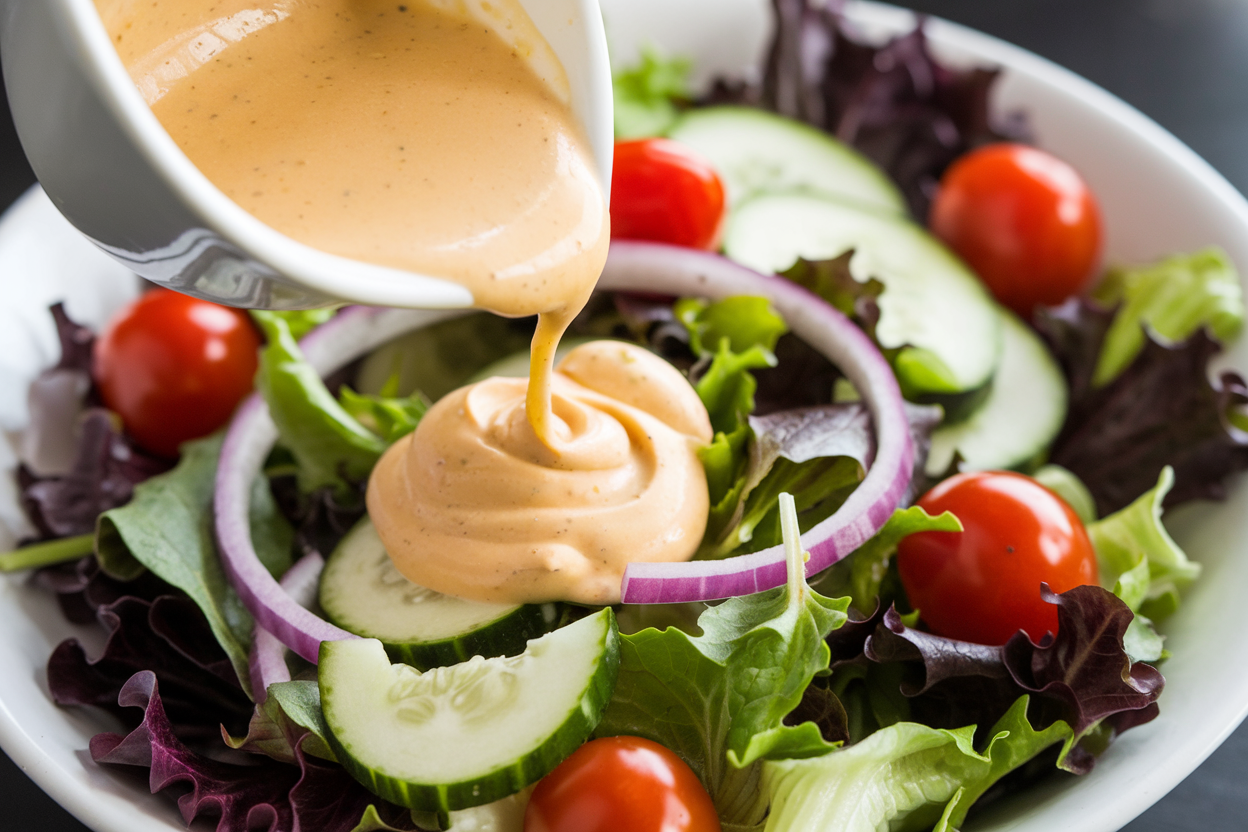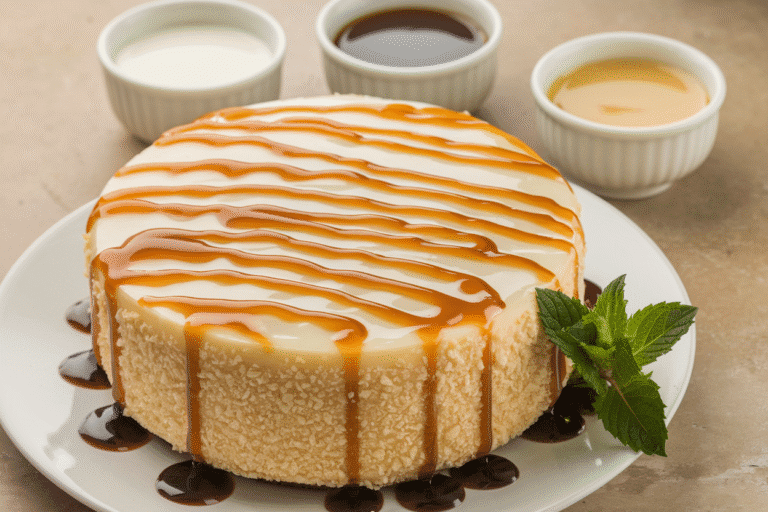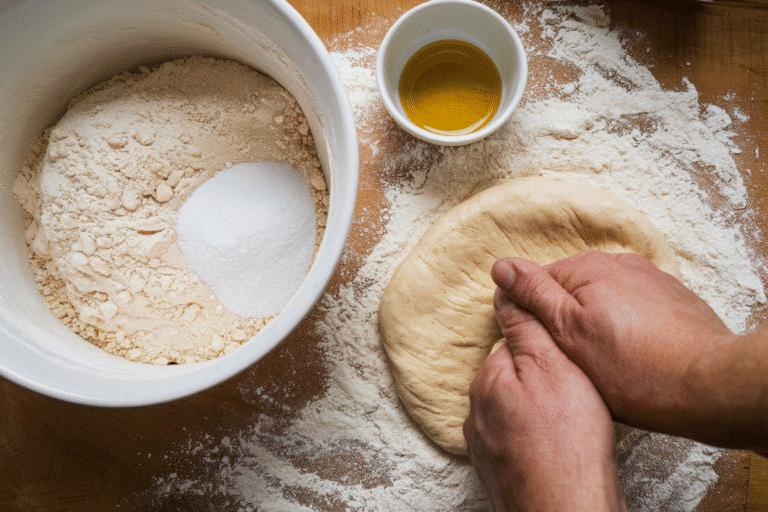The Best Salad Dressing Recipe You’ll Crave: The 60-Second Flavor Bomb You’ll Put on Everything
You don’t need a fancy blender or a chef’s degree—just a jar, a fork, and the will to stop buying sad bottled dressings. This is the ultra-versatile, wildly addictive dressing that turns “just a salad” into the meal you brag about. It’s tangy, silky, a little sweet, and unapologetically bold.
Make it once, and it’ll live in your fridge like a VIP. Warning: you’ll start putting it on roasted veggies, sandwiches, and yes—pizza crusts. Don’t judge.
Why You’ll Love This Recipe
- Big payoff, tiny effort: One jar, 60 seconds, no special tools.
That’s it.
- Tastes like a restaurant: Balanced acidity, rounded sweetness, and a savory backbone.
- Ultra-flexible: Works with greens, grains, chicken, beans, tomatoes—basically anything edible.
- Meal-prep friendly: Keeps for a week and gets better by day two. Flavor compounds cozy up over time.
- Customizable: Make it garlicky, herby, spicy, or sweet. You’re the boss.
Shopping List – Ingredients
- Extra-virgin olive oil – 1/2 cup (good quality matters here)
- Red wine vinegar – 3 tablespoons (or white wine vinegar)
- Dijon mustard – 2 teaspoons (for body and tang)
- Honey or maple syrup – 2 to 3 teaspoons (adjust to taste)
- Garlic – 1 small clove, finely grated or minced
- Shallot – 1 tablespoon, very finely minced (optional but stellar)
- Kosher salt – 1/2 teaspoon (start here, then tweak)
- Freshly ground black pepper – 1/2 teaspoon
- Lemon zest – from 1/2 lemon (optional brightness)
- Crushed red pepper flakes – a pinch (optional heat)
Step-by-Step Instructions
- Set up your flavor base: In a jar with a tight lid, add red wine vinegar, Dijon, honey, garlic, shallot, salt, pepper, and lemon zest.
This is your flavor engine.
- Emulsify smart: Pour in the olive oil. Close the lid and shake hard for 15–20 seconds until it looks glossy and unified. No blender?
No problem.
- Taste and calibrate: Dip a leaf of lettuce (not a spoon). If it tastes sharp, add 1–2 teaspoons more olive oil. If it’s flat, add a splash of vinegar or a pinch of salt.
- Kick it up (optional): Add a pinch of red pepper flakes for a warm finish.
Stir or shake again.
- Let it marry: Rest 5 minutes so the shallot and garlic mellow. Flavor glow-up activated.
- Serve like you mean it: Dress salad lightly, toss, taste, then add more as needed. The goal: a thin, even sheen—not a pool.
Keeping It Fresh
- Storage: Keep sealed in the fridge for up to 7–10 days.
Shake before each use—separation is normal.
- Refresh: If it thickens in the fridge, add 1–2 teaspoons warm water and shake to loosen.
- Garlic safety: If you’re stretching beyond a week, skip fresh garlic and use 1/8 teaspoon garlic powder instead. FYI, fresh garlic can get funky over time.
- Batching: Doubling or tripling? Great.
Just keep the oil-to-acid ratio consistent.
Nutritional Perks
- Heart-healthy fats: Extra-virgin olive oil brings monounsaturated fats for satiety and flavor.
- Antioxidants: EVOO and lemon zest offer polyphenols and vitamin C vibes.
- Lower sugar than store-bought: You control the honey—no corn syrup stowaways.
- Emulsifiers that work for you: Dijon helps your body absorb fat-soluble nutrients from veggies. Win-win.
What Not to Do
- Don’t over-garlic: Raw garlic gets louder as it sits. One small clove is plenty.
- Don’t skip salt: Under-salted dressing = bland salad.
Salt unlocks everything.
- Don’t drown your greens: Overdressing turns crisp into soggy in 60 seconds. Add gradually.
- Don’t use bitter oil: Stale or cheap olive oil will hijack the flavor. Use fresh, decent EVOO.
- Don’t toss too early: Dress right before serving.
Lettuce has feelings (and water).
Recipe Variations
- Lemony Herb Upgrade: Swap 1 tablespoon vinegar for lemon juice; add 2 tablespoons chopped parsley, basil, or dill.
- Balsamic Twist: Use balsamic instead of red wine vinegar; add 1 extra teaspoon Dijon and a touch more honey to balance acidity.
- Maple-Mustard Dream: Go 1 tablespoon Dijon, 1 tablespoon maple syrup, and white wine vinegar. Great on grain bowls and roasted squash.
- Creamy Version: Whisk in 2 tablespoons Greek yogurt or 1 tablespoon mayo for a plush texture. Thin with water if needed.
- Smoky Chipotle: Add 1 teaspoon adobo sauce from chipotles and a squeeze of lime.
Incredible on chicken salads.
- Miso Magic: Add 1 teaspoon white miso for umami and saltiness; reduce added salt slightly.
FAQ
Can I make this without mustard?
Yes. The mustard helps emulsify and adds tang, but you can replace it with 1 teaspoon mayo or 1 teaspoon miso paste. Or just shake a little longer and expect faster separation—still delicious.
What’s the best vinegar to use?
Red wine vinegar hits the classic bistro profile.
White wine vinegar is brighter, balsamic is richer and sweeter, and sherry vinegar adds nutty depth. Apple cider vinegar works too, but go easy—it’s assertive.
How do I keep the dressing from separating?
Use Dijon mustard and shake vigorously. If you want an even tighter emulsion, whisk slowly while streaming in the oil or blend for 10 seconds.
Separation is normal—just shake before using.
Is there a good vegan sweetener swap?
Absolutely. Maple syrup works perfectly, and agave does in a pinch. Start with 2 teaspoons and adjust to taste.
Can I use this as a marinade?
Totally.
It’s fantastic on chicken, tofu, and veggies. Marinate proteins 30–90 minutes, veggies 15–30 minutes. Don’t go overnight with acid—it can toughen or mush textures.
What greens does this pair with best?
Arugula, romaine, butter lettuce, mixed greens, and spinach all love it.
For hearty greens like kale, massage a tablespoon of dressing into the leaves first, then add more to finish.
How do I make it less tangy?
Add 1–2 teaspoons olive oil and a pinch more honey. Also, try swapping half the vinegar for lemon juice for a softer acidity.
Can I add cheese?
Yes, chef. Grated Parmesan or Pecorino in the salad (not the jar) adds richness and umami.
If you add cheese directly to the dressing, use within 3–4 days.
Is fresh garlic safe to store in oil?
Short-term, yes, when refrigerated and used within a week. For longer storage, use garlic powder instead. Safety first, flavor forever, IMO.
How much dressing should I use per salad?
Start with 1 tablespoon per 2 cups of greens, toss, then add more as needed.
You want a light gloss, not a slip-n-slide.
Final Thoughts
The best salad dressing recipe isn’t complicated—it’s confident. Sharp enough to wake up dinner, smooth enough to go with anything, and fast enough for weeknights. Make a jar today and watch your “meh” salads level up instantly.
And when you start pouring it on roasted potatoes and grain bowls? That’s not mission creep. That’s good taste.






